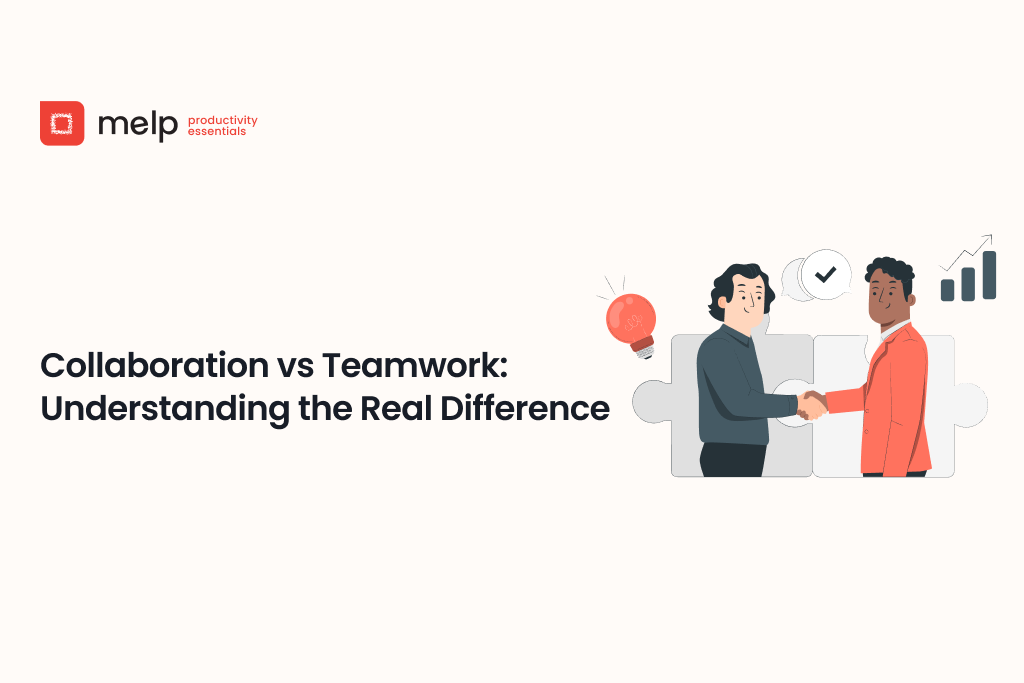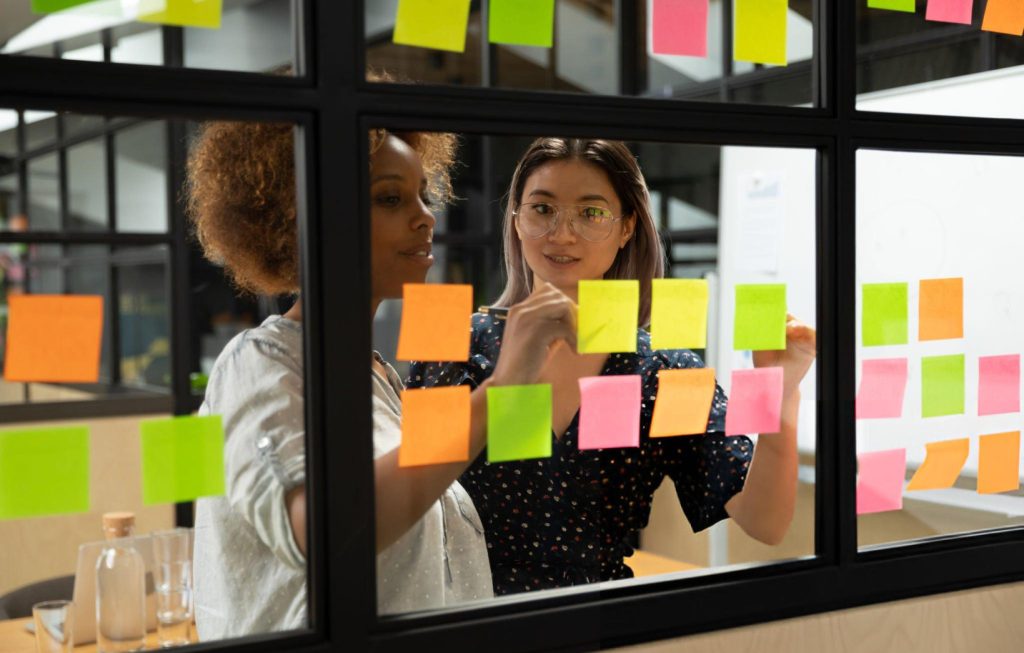
Collaboration and teamwork might sound like the same thing, but they serve different purposes in a workplace. Knowing how they differ can help you manage people better, improve the way you handle projects, and make your workflow smoother. Many people ask, “Are collaboration and teamwork the same?” While they overlap, they have different goals and structures.
Understanding the teamwork and collaboration difference helps you apply the right strategy at the right time. When used in the right way, both teamwork and collaboration can move your business forward and create a more connected environment where everyone contributes meaningfully.
What is Teamwork?
Teamwork happens when a group of people work together to get something done. Each person has their part, and the success of the team depends on everyone doing their job well. There’s usually a set plan, and everyone follows it to meet deadlines or reach goals.
It works best when roles are clearly defined and tasks need to be completed in a specific order.

Teamwork usually involves:
- A clear goal that everyone is focused on
- Tasks are split between members based on skills
- Coordination and support from all sides
- A manager or leader keeps things on track
- Responsibility for individual parts of the bigger picture
In structured departments like customer service or logistics, teamwork is the backbone of daily operations.
What is Collaboration?
Collaboration is more about idea-sharing and problem-solving. People come together to think through challenges, contribute different viewpoints, and find new solutions. Unlike teamwork, roles aren’t always fixed, and ideas can come from anyone. It’s a go-to approach when the plan isn’t set in stone and you’re figuring things out as you go. This shows clearly how is collaboration different from teamwork, especially in uncertain or creative environments.
Collaboration often includes:
- Open discussions between individuals or groups
- A flexible approach to roles and responsibilities
- Contributions that go beyond job titles
- More freedom to suggest, change, and adjust
- Focus on brainstorming and exploring new options
It’s especially useful in creative settings, during planning stages, or when launching something new—precisely where the collaboration vs teamwork difference becomes most clear.
Teamwork vs Collaboration: What’s the Real Difference?
The teamwork vs collaboration difference lies in how people work, share ideas, and execute tasks.
| Feature | Teamwork | Collaboration |
| Structure | Organized and role-based | Open and adaptable |
| Goal | Predefined and task-oriented | Can evolve or flexible |
| Interaction | Coordinated tasks | Free exchange of ideas |
| Use Case | Execution of known projects | Solving new or unclear challenges |
| Example | Launching a campaign | Planning a campaign strategy |
Understanding this difference helps you decide which method to use based on the project stage or team setup. These examples clearly show how does collaboration differ from teamwork, especially in how decisions are made and ideas are handled.
When to Use Teamwork
Teamwork is most useful when you know what needs to be done, and the main focus is on doing it well. Everyone gets a task, and success comes from sticking to the plan and supporting one another.
Use teamwork when:
- There’s a set goal and a tight deadline
- You’re repeating a known process
- People have specialized tasks
- You need fast, reliable results
- You’re scaling something that already works
In these cases, planning is already done, and it’s time to execute.
When to Use Collaboration
Understanding the difference between collaboration and teamwork helps you know when to lead with idea-sharing, especially when you’re starting from scratch or improving something. It helps people step outside their usual roles, share opinions, and look at problems from different angles.
Try collaboration when:
- The project doesn’t have a clear direction yet
- You’re collecting feedback from multiple departments
- You’re facing a unique challenge
- Innovation or creativity is needed
- You’re developing new services, content, or strategies
It’s ideal for the early part of a project or when you want to shake things up.
Blending Both for Better Results

Most successful workplaces understand the difference between teamwork and collaboration and blend both to get the best of planning and execution.
Here’s how to mix both effectively:
- Begin with collaborative sessions to shape the project
- Define goals clearly so that teamwork can follow
- Use tools that support both open input and structured task tracking
- Hold regular check-ins to adjust if things change
- Let people switch modes as needed without confusion
To support this, many businesses now rely on unified platforms that allow them to create, communicate, and collaborate in one space. A solution like Melp Team Collaboration Tool brings messaging, meeting tools, file sharing, translation, group channels, and a shared calendar into one dashboard. This helps reduce tool fatigue, keeps conversations focused, and allows teams to work smoothly across devices and locations.
Blending collaboration and teamwork makes the entire workflow more dynamic and efficient without needing a dozen separate apps.
Difference Between Collaboration and Teamwork in a Real Workplace Scenario
A mid-sized company needs to roll out a new internal system. Before anything starts, people from IT, HR, and operations sit down to figure out what the system should solve. Each person brings a different concern. IT talks about software compatibility, HR focuses on ease of use, and operations want smoother processes. No one’s following a script. They’re sharing thoughts freely to build a plan together. That’s collaboration.
Once the plan is agreed on, the focus shifts. IT starts setting up the tools, HR prepares training sessions, and operations makes sure schedules line up. Now, everyone sticks to their part. They follow the plan, check in when needed, and aim to finish on time. That’s teamwork.
This real-world case shows the difference between collaboration and teamwork. The first helped shape the direction. The second made sure the work got done.
Final Thoughts
Collaboration and teamwork both matter but understanding the collaboration vs teamwork balance is what really drives better outcomes.Teamwork is about structured action. Collaboration is about creative thinking. Use them at the right time, and you’ll build a stronger workplace where things not only get done but get done better.
Understanding when to plan together and when to execute separately gives your business the kind of edge that keeps projects moving and people motivated. With the right balance of teamwork & collaboration, your team can move faster, think smarter, and deliver better outcomes.
Ready to Empower Smarter Collaboration?
If you want your people to do more than just complete tasks—if you want them to build, share, and grow together—start with the right digital workspace. A unified solution like Melp helps your team switch smoothly between planning, doing, and improving, while bridging the gap between teamwork vs collaboration—all in one place.